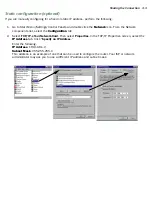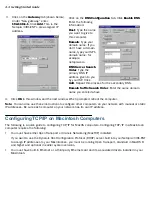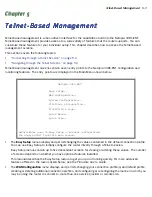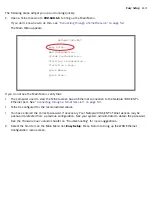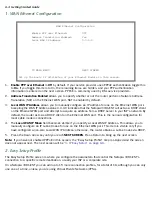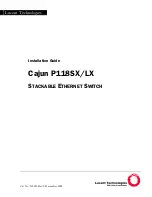
Connecting to Your Local Area Network 3-1
C
C
C
Ch
h
h
haa
a
ap
p
p
pttttee
e
errrr 3
3
3
3
C
C
C
Co
o
o
on
n
n
nn
n
n
nee
e
eccccttttiiiin
n
n
ng
g
g
g tttto
o
o
o Y
Y
Y
Yo
o
o
ou
u
u
urrrr LLL
Lo
o
o
occccaa
a
allll A
A
A
Arrrree
e
eaa
a
a N
N
N
Nee
e
ettttw
w
w
wo
o
o
orrrrkk
k
k
This chapter describes how to physically connect the Netopia 3381-ENT to your local area network (LAN). Before
you proceed, make sure the Netopia 3381-ENT is properly configured. You can customize the router’s
configuration for your par ticular LAN requirements using console-based management (see
“Telnet-Based
Management” on page 5-1
).
This section covers the following topics:
•
“Readying Computers on Your Local Network” on page 3-1
•
“Connecting to an Ethernet Network” on page 3-2
Readying Computers on Your Local Network
PC and Macintosh computers must have cer tain components installed before they can communicate through
the Netopia 3381-ENT. The following illustration shows the minimal requirements for a typical PC or Macintosh
computer.
Application software:
This is the software you use to send e-mail, browse the World Wide Web, read
newsgroups, etc. These applications may require some configuration. Examples include the Eudora e-mail client
and the Web browsers Microsoft Internet Explorer and Netscape Navigator.
TCP/IP stack:
This is the software that lets your PC or Macintosh computer communicate using Internet
protocols. TCP/IP stacks must be configured with some of the same information you used to configure the
Netopia 3381-ENT. There are a number of TCP/IP stacks available for PC computers. Windows 95 includes a
built-in TCP/IP stack. Macintosh computers use either MacTCP or Open Transpor t. See
“Configuring TCP/IP on
Windows-based Computers” on page 4-1
. Macintosh computers use either MacTCP or Open Transpor t. See
“Configuring TCP/IP on Macintosh Computers” on page 4-4
.
Ethernet Driver
TCP/IP stack
Application software
Your PC
or Macintosh
computer
To the Netopia

















